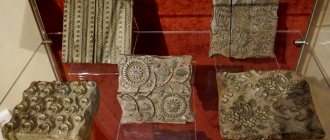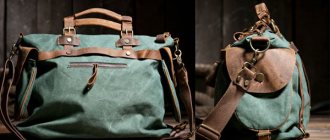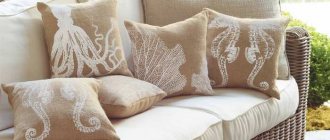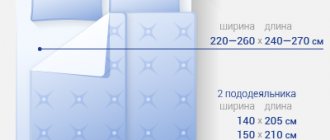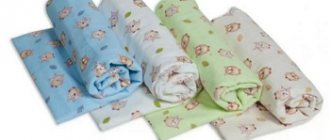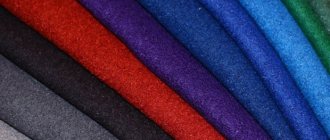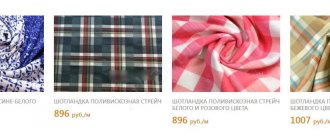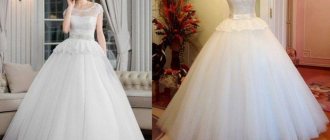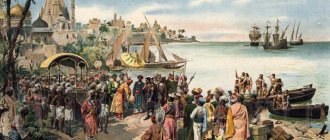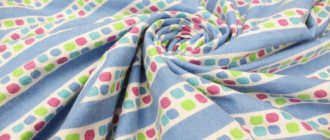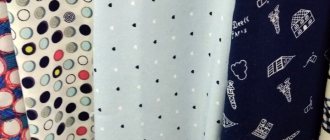What type of fabric is this
Loden is a warm, dense, soft material made from sheep's wool. The fabric is similar in appearance to cloth, drape, felt, felt, but soft and light. In the production of loden, woolen fabrics are boiled in soap solutions, so the second name for the material is boiled wool.
Loden fabric colors
Loden is produced in factories in Italy, Korea, Austria:
- Sheep wool is cleaned and washed.
- Yarn is made on spinning machines.
- On felting machines, yarn is formed into loose, lumpy webs.
- In other production methods, linens are made on looms or knitting machines and then felted.
- The fabrics are boiled in soap solutions until a dense, smooth fabric is obtained.
When boiling:
- the wool becomes soft and flexible;
- density increases;
- breathability decreases;
- water-repellent properties appear.
Finished canvases are processed:
- paint;
- dried;
- combed out with a scraper, trimmed.
Raw materials and production
Loden fabric - what is it? Natural wool, mainly sheep's, is used as raw material. To soften the fabric, mohair is added to it.
Sheep wool - raw material for loden
The production principle has not changed since the first loden was received:
- After shearing the sheep, the wool is washed and spun;
- the yarn is piled into plates and boiled until the material becomes dense and durable;
- then dye is added to give the desired color and sent to dry;
- at the very end, the loden is combed: poorly matted pieces are removed and too long, protruding hairs are cut off.
Felting machine
Today, felted wool (fabric) is not always the only raw material. During production, viscose or polyamide is often added. This does not affect the appearance in any way, but the material becomes less demanding to care for and hardly shrinks.
You might be interested in: Features and properties of organic cotton
Pros and cons of fabric
Benefits of boiled wool:
- beautiful, unusual;
- natural;
- soft, comfortable to wear;
- repels water and dirt;
- keeps warm, warms, protects from wind,
- plastic, suitable for complex styles;
- does not crumble when cutting, there is no need to process the cuts;
- The surface structure allows you to sew clothes without lining and with the seams facing out.
Flaws:
- shrinks when wet;
- before cutting, decatification is required (wet heat treatment);
- delicate care required;
- Lanolin, which is found in sheep's wool, causes allergies.
Fabric properties
The surface of the material can have short or long pile.
Loden fabric is made from natural sheep wool. Some manufacturers add mohair to the composition, which makes the material softer and lighter.
Modern loden production technology is not fundamentally different from that used many centuries ago. Of course, today the entire manufacturing process is automated.
First, the sheep are shorn, the wool is washed and spun. The finished fiber is felted, after which a loose woolen fabric is obtained. The fabric is boiled in boiling water with special additives until the material becomes smooth and dense. After this, the canvas is dyed, dried and combed.
Loden fabric has characteristics similar to many similar materials. In terms of density and ability to repel moisture, it can be compared with felt, but loden has less thickness and weight. Boiled wool is softer than felt and less breathable than drape.
What standards are used in production? What do they take into account?
Loden is subject to GOST 28000-2004 for ready-made clothing wool and wool blend fabrics.
GOST established technical requirements for wool materials:
- coloring;
- raw materials;
- permissible size deviations;
- physical and mechanical indicators;
- packaging.
GOST defines:
- safety requirements;
- test methods;
- acceptance rules;
- storage, transportation.
How to choose a good Loden
When choosing a material, you should pay attention to the following:
- texture and thickness: it should be the same throughout the entire piece;
- pile: hairs should be the same length and lie in the same direction;
- coloring: the fabric should be free of stains, discoloration and other similar defects;
- Price: Loden doesn't come cheap. If the cost looks suspiciously low, most likely the material will be of poor quality or a fake.
Loden coat
Important! To check, you need to squeeze the edge of the material in your fist. When you unclench your fingers, the fabric should quickly return to its previous shape and there should be no marks on it.
You might be interested in everything about durable cotton fabric of brown-yellow color (nanki)
What purposes can this fabric be used for?
Demi-season and winter outerwear is made from thick boiled wool:
Coat
Poncho
Jackets
From thick loden they make:
- headwear - hats, caps, berets;
- shoes;
- gloves;
- bags.
From soft plastic materials of medium thickness they sew:
Blazers and cardigans
Cardigans
Pullovers and sweatshirts
Vests and suits
Sweaters and sweatshirts
Demi-season items are sewn from knitted loden:
- skirts;
- trousers;
- dresses.
Do-it-yourself loden coat
Such a thing is quite easy to sew for both a beginner and an experienced specialist, and all thanks to the fact that sections of the material do not have to be processed at all. In addition, if required, you don’t have to sew a lining. Most models have a fairly simple cut, but this? from my side? best suited to combine with the sought-after casual style.
A coat that is sewn with your own hands can become a unique piece of clothing and will also perfectly suit your figure.
What is loden
Loden is a rather dense felted wool, which is made from wool by boiling it at high temperatures. Products made from it are highly resistant to wear and have excellent water-repellent properties . The material is soft to the touch, very elastic and lends itself well to drapery.
Reference! Loden was discovered completely by accident by a peasant from Tyrol when, due to his misunderstanding, he dropped his own woolen item into boiling water. Actually, after which wool acquired new, softer, very high thermal insulation properties and is popular all over the world even at the moment.
This material is so valued for certain reasons:
- Made from environmentally friendly elements.
- Has excellent thermal insulation properties.
- Easy to trim and cut when sewing.
- Does not allow air to pass through.
Pattern of shorts for beginners construction options
It is for these reasons that Loden is widely used in the mass production of outerwear, shoes and a wide variety of accessories.
Model selection, material preparation
Each figure can be beautifully designed using a wonderfully chosen model. The important length remains “knee-length”, however, based on your own desires, you can settle on a short length of the product.
In order to decide on a model, you need to take into account the key wardrobe on top of which the coat will be worn. A short one looks great with trousers, a long one is better suited for skirts and dresses.
This model is suitable for almost every figure, so we will consider it itself.
A loden coat can be combined very well with a variety of metal elements: buttons, snaps, brooches.
The most important point is to prepare the material before work..
Loden shrinks significantly after heat and wet treatment. Therefore, before cutting, the material should be steamed and the direction of the thread, as well as the front side of the fabric, should be determined.
Coat pattern
The key data, as with any product, is the measurements. For further work you will need the following main indicators:
- Chest circumference.
- Shoulder width (eg: 44 cm).
- Sleeve length (eg: 30 cm).
- Hip circumference (eg: 90 cm).
- Product length down from shoulder level (eg: 80 cm).
Pattern diagram:
Cutting fabric
Since the product is considered a model with a one-piece sleeve, which is shown on the pattern, you should transfer the measurements to the fabric and circle it with chalk.
Similarly, if the shoulder width is typically 44 cm and the sleeve length is 30 cm, then for half of the product, if the material is folded in two along its long part, a piece of fabric 52 cm wide + 3 cm for looseness will be required.
And the length of the required material will usually be 2 the length of the product, which means it is equal to 160 cm.
Important! It is necessary to take into account that the width of the back is equal to half the circumference of the hips and +3 cm for a loose fit.
A stand-up collar can be cut out of fabric strips, the length of which is equal to the length of the neck, and the height can be cut at your own discretion: with or without a hem.
Deceuninck window profiles - differences and characteristics, description and prices - Deceuninck
Sewing stages
A similar product is sewn from the side seams, and only after that the collar should be sewn on. For example, if you are not going to use fasteners, it is better to cut out a belt from the same material and sew specialized holes to the side seams through which the belt will be worn.
As you can see, even such a seemingly complicated product as a coat is quite easy to sew on your own. The main thing is to stock up on perseverance and important material.
Care instructions
Products made from loden are difficult to care for. They should not be machine or hand washed and dry clean only. At home, clothes can be cleaned with a dry brush in the direction of the pile. Before ironing, you must turn the product inside out or use an additional layer of gauze.
Items made from felted wool should be stored in folded paper bags and separately from other clothes. Textiles should be carefully protected from moths.
Despite the difficulty of care, clothes made from boiled wool remain highly sought after and popular. Stylish and warm items made from loden can decorate the wardrobe of the most discerning fashionistas.
Materials used to make a lightweight coat without lining
- Cashmere . This type of material is obtained by combing the wool of goats that live in the provincial town of Kashmir, on the border of Pakistan and India. This “golden material” is obtained in the spring, when goats begin to shed only once. Each goat is combed from approximately 100 grams of fluff to 150 grams. On average, sewing a cashmere coat will cost about 10-15 goats' down. The down of these animals is incredibly thin and light. A cashmere coat will keep you warm in any bad weather because it has a rare property - low thermal conductivity. This type of material is hypoallergenic.
- Felted wool . It is an environmentally friendly material and will keep you warm in the most “merciless” frosts. Wool has been felted for centuries. Currently, felted wool coats are made using two methods:
- Dry technique. It was used during the times of Ancient Rome. Thanks to this technology, the coat acquires its own “trick” - various kinds of patterns and designs.
- Wet technique. This technique is the most recognized. With its help, outerwear is made of the most beautiful beauty.
An unlined coat made of felted wool fits well on any representative of the fairer sex. Some designers put their initials on clothes as a sign of distinction and uniqueness of the model. Sheep wool is used as a base. Sheep wool does not cause allergies and is wear-resistant.
- Loden . The material for sewing coats is also made of wool. Loden retains heat excellently, is a lightweight material, has good air permeability, and is also impervious to dirt. The only negative is that the material tends to deform, hence maintenance requires necessary costs.
- Drap . At first, drape was made only from 100% wool, but today fashion designers use synthetic threads and also resort to artificial fibers. The drape coat is the ideal collection for the fairer sex. It will highlight the image and holds its shape perfectly. The correct option: a coat where more than seventy percent wool will be used.
- Lace. Currently, the lace coat has earned great recognition from many fashionistas. Often this is the summer version. This style “sits” elegantly and sophisticatedly on any girl.
Varieties of loden
Currently, this ancient material is again at the peak of popularity. Fabric production is constantly being improved. More and more new methods and varieties of felted material are being developed. Here are some methods for creating loden:
- felting followed by impregnation;
- weaving and felting;
- knitting and then felting;
- formation of fabric on a knitted basis;
- non-felt method;
- adding polyester to the composition.
The surface of the material is also very diverse. It can have long or short pile, be boucle, with embroidered and textured patterns. There is a double-sided type of fabric when the front side is different from the back.
